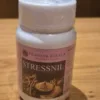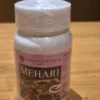Agnimantha
|
Botanical name |
Premna mucronata. |
|
Family: |
Verbenaceae |
|
Sanskrit: |
Agnimath, jay, and sriparna. |
|
English |
Headache tree. |
|
Hindi |
Arni, ganiyar, bharkhar. |
|
Kannada |
Agnimantha. |
|
Malayalam |
Mujna, kattappa. |
|
Telugu |
Kondamanga, takli, nelli, pedda nelli kura, konda manga. |
|
Tamil |
Minni, pachumallai, munnai, erumaimunnai, and celumalaron. |
|
Marathi |
Eran, takli. |
Distribution:
Available in northern india widely.
|
Parts used: |
Leaf, root. |
|
Dose: |
Churna 1 to 3 gm, juice 10 to 20 ml, kwath 50 to 100 ml. |
Chemical constituents
Agnimnatha extracts do contain ceryl alcohol, clerodin, clerosterol, cerotic acids,
clerodendrin, d-mannitol, hispidulin, palmitic, luteolin, apigenin, pectolinarigenin.
Ayurvedic properties:
|
Quality (guna) |
Ruksha, laghu. |
|
Taste (rasa) |
Tiktha, katu, kashy, madhura.. |
|
Metabolism (vipaka) |
Katu. |
|
Potency (virya) |
Ushna |
|
Impact (prabhava) |
Raktabhar shamaka. |
Pharmacological action:
Hypoglycaemic property of agnimantha extracts is helpful for controlling diabetes. Anthelmintic property of agnimnatha is helpful to prevent worm infestation. It is found effective in reducing edema.
Therapeutic uses
- Agnimantha is effective in hypertension.
- Abdominal disorders.
- Skin diseases.
- Pacifies vitiated vata and kapha.




